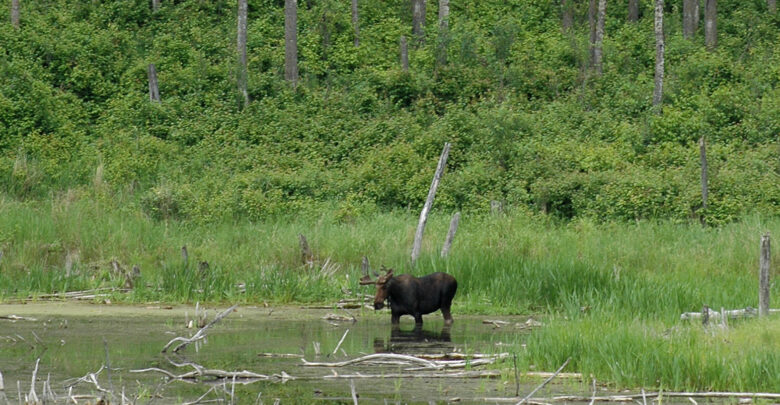 Supplied
SuppliedMoose Pasture, a 65-hectare property east of Elk Island National Park, has been put under a conservation agreement with the Nature Conservancy of Canada (NCC). The agreement was signed by Heather Proctor, a professor of biological sciences at the University of Alberta.
The private land, owned by Proctor, is now a part of over 1,500 hectares that the NCC has conserved in the Beaver Hills region. Proctor signed a conservation agreement with the NCC to protect Moose Pasture from land development.
The agreement provides security for the future of the land, Proctor explained. If Proctor were to sell the land in the future, “that legal protection travels with the land.”
“It’s extremely difficult to lose that legal protection afterwards. That made me feel very secure that people wouldn’t pretend that they were going to conserve Moose Pasture and then buy it and turn it into a bunch of subsections.”
Proctor’s conservation efforts stem from concerns with the urbanization of natural spaces
According to Proctor, her conservation efforts were largely inspired by her concern of natural spaces such as farmland, parklands, and wildlands being turned into urban areas. Proctor said she began looking for intact pieces of land she could purchase.
In her search for the right property, Proctor found Moose Pasture through former U of A professor Randolph Currah. She bought the property in 2006 after she and Currah went for a walk around the property together.
Having monetarily donated to the NCC before, Proctor said she began to consider conservation. Initially, she didn’t move forward due to worries about the process.
“Every couple of months there would be flyers and notices coming from the NCC about their land and conservation programs. And I thought, ‘oh, that’s going to be way too hard and scary.'”
Then, Proctor said she received support from John Acorn, a U of A lecturer in the department of renewable resources.
Proctor said that Moose Pasture was easier to conserve than some areas. Moose Pasture is situated on the eastern side of Elk Island National Park. This provides “a huge buffer against expansion, because it’s pretty hard to go through a national park”.
Since the NCC announced the conservation of Moose Pasture, Proctor said several people that own property in Beaver Hills have contacted her, interested in doing as she did.
While teaching at the U of A, Proctor said she tries “not to come across as heavy-handed when I make comments about conservation.” Rather, through her courses she tries to make students “fall in love with organisms.”
“If you love something or even if you find it cool, then you’re going to want to protect it. That’s my wish.”
Several new species of mites discovered from Moose Pasture samples
According to Proctor, new species of mites have been discovered from Moose Pasture samples. These mites are completely new scientific discoveries, Proctor said.
“We tend to think undiscovered biodiversity is only going to be in rainforests or in deep oceans. But it depends what you’re working on. If you’re working on mites or other small critters, there’s lots to discover even in your own backyard.”
According to the NCC, a total of 195 mite species have been documented in Moose Pasture. One of the species, Tectoribates alcescampestris, was named after the property. A main research area for Proctor is the behaviour of mites. She has previously conducted research on samples found at Moose Pasture.
Through the conservation agreement, Proctor said she feels she has done “at least one very valuable thing for other species on this planet.”
“It makes me feel like I’ve done something useful for the world. Sometimes it’s really rare to feel that.”




